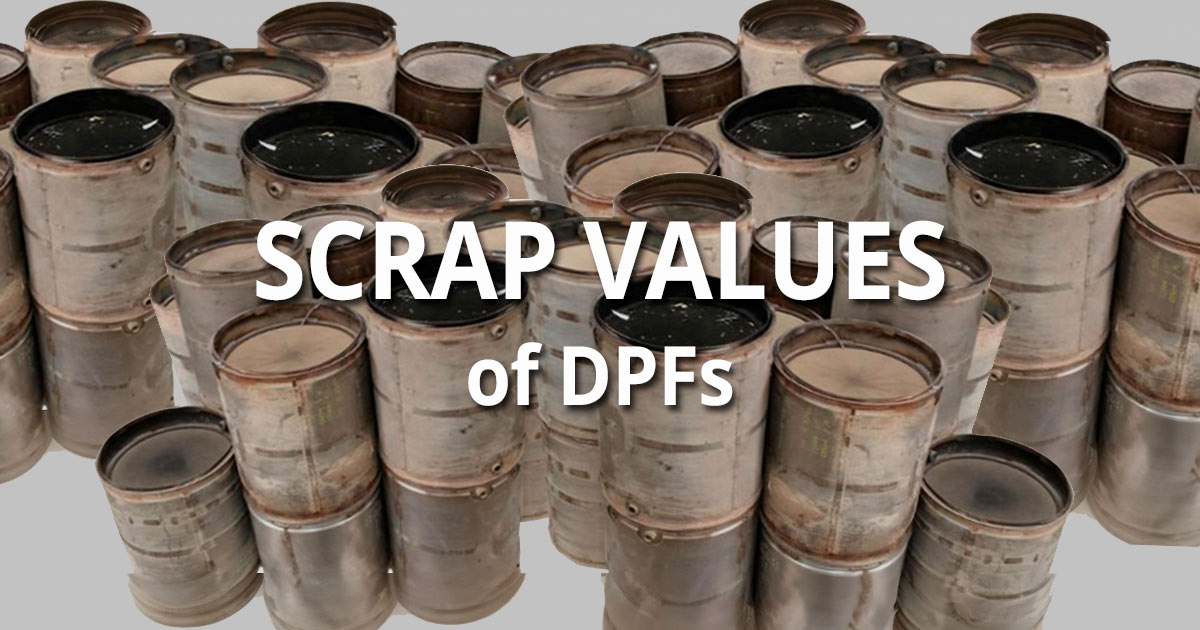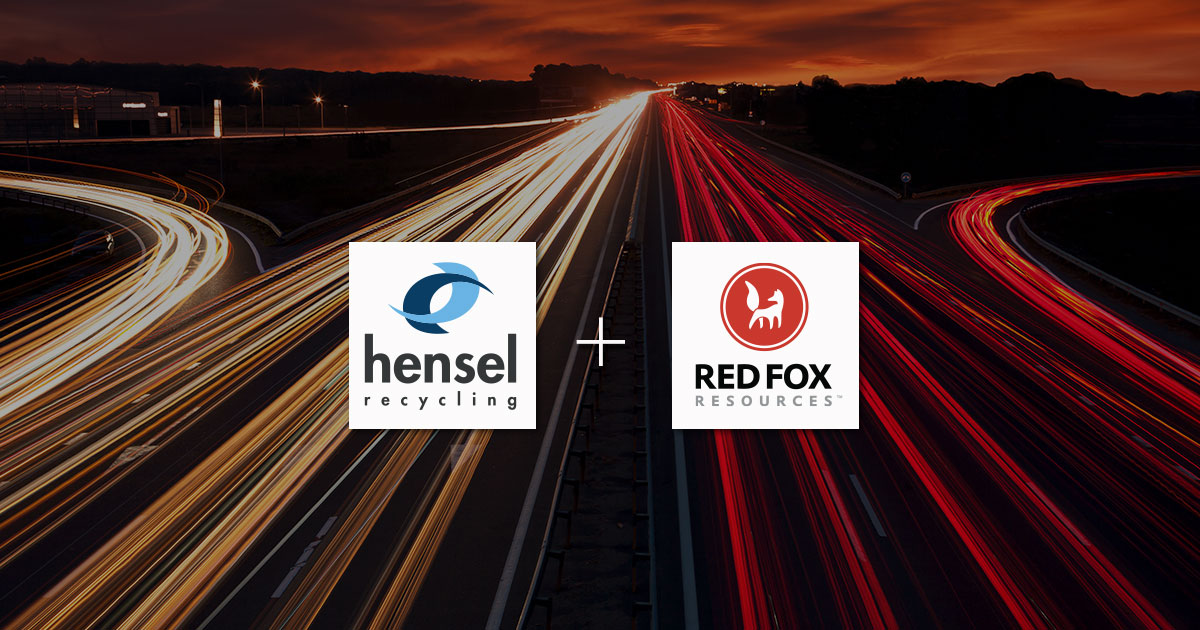As DPF (diesel particulate filter) cleaning becomes a routine part of truck maintenance, properly disposing of recovered DPF ash is a common question for shops and fleets. Unfortunately, depending on where you are located, this can be a complex topic. In this article, we’ll attempt to provide some clarity on DPF ash disposal by starting with the basics.
This blog post is intended to provide general guidance on DPF ash disposal. You should consult your local and state environmental regulatory agencies for accurate regulations regarding hazardous waste determination and disposal in your area.
How is DPF ash generated?
A DPF physically traps and collects diesel soot from engine exhaust. While the trapped soot is burned off during periodic filter regeneration, metal oxide “ash” particles are not burned off. Over time, the unburned ash particles will plug the filter unless the filter is periodically cleaned.
How are DPFs cleaned to remove ash?
DPF manufacturers have recommended various filter cleaning techniques to remove the accumulated ash. A standard method for cleaning DPFs is using “Bake and Blow” machines, which routinely yield ash that can be categorized as Non-RCRA Hazardous Waste based on the amount of zinc it contains. Because states like California have more stringent laws than others, some DPF cleaning methods assume that you can throw the ash away, blow it into the air, or dump it into the sewer. None of these methods are recommended, and it may be illegal in certain states (California, for example) if the ash is considered hazardous waste.
What is Non RCRA Hazardous waste and why should I be concerned?
Hazardous waste is divided into different types (e.g., universal waste) or categories, including RCRA hazardous waste and non RCRA hazardous waste. Non RCRA hazardous waste means the waste is not a Federally regulated waste, but regulated at the state or local level. Properly categorizing a hazardous waste is necessary for land disposal restrictions, transportation, treatment standards and fees, among other things. Unless you’re routinely testing your ash, a standard practice in California is to assume DPF ash is a Non RCRA Hazardous Waste based on the zinc it may contain.
Why are some states concerned about DPF ash disposal?
Some states, like California, believe that the ash from a DPF may be properly classified as hazardous waste because tests have shown high levels of zinc, a hazardous substance. California laws, enforced by the Department of Toxic Substances Control (DTSC), require that you properly manage and ship hazardous waste. It is illegal to throw hazardous waste away in ordinary trash or to dispose of hazardous waste by burying, burning, blowing it into the air, or placing it into water or down the sewer.
Can I sell or ship my DPF ash to an out-of-state processor?
Some DPF cleaning facilities are selling and shipping their DPF ash to out-of-state companies for a nominal per pound fee – shops doing this should be very careful and ensure they follow compliant protocols; otherwise, significant violations and fines from state and local environmental regulatory agencies could be assessed. For example, in 2013, a company in Southern California was fined $45,000 for improperly disposing of DPF filters containing ash. DTSC issued a press release on this fine as an educational tool to ensure generators are aware of the possible repercussions of improper disposal of DPF ash.
Why would someone want to buy my DPF ash?
DPF ash may contain trace amounts of the catalyst material (Platinum Group Metals or PMG) that is dislodged from the filter substrate during the cleaning process. This PGM is the same material that DPF recyclers like Red Fox Resources reclaim during their compliant recycling process of old or damaged DPF/DOCs.
Under what circumstances can a California based generator sell/ship DPF ash to an out of state processor?
Option 1: If you have test data from a state-authorized test facility that would show the residual ash does not cross over the thresholds for Non RCRA hazardous waste. You would be able to freely ship the material anywhere you’d like. However, it has become industry standard that in California for DPF ash to be treated as hazardous waste and managed accordingly.
- As a potential generator, you have two options. You can assume the ash is hazardous waste based on your knowledge that other tests have found it so, or you can have your waste tested by a state-authorized testing facility. You can get a list of these facilities from the Department of Toxic Substances Control.
- It should be noted that you would need to test each batch. It’s unacceptable to take a sample and apply the results to all DPF ash, as the material is generated from different sources.
Option 2: Treat the DPF ash as hazardous waste and ensure the transporter and the facility receiving the material are properly licensed. Based on the zinc content, it has become industry standard that DPF ash from standard “Bake and Blow” cleaning machines is non-RCRA hazardous waste.
- A licensed hazardous waste transporter must carry out the movement of hazardous waste material, and the material needs to be manifested following EPA requirements. https://www.epa.gov/hwgenerators/hazardous-waste-manifest-system.
- Manifests are important because they provide a “cradle to grave” timeline for hazardous waste from a generator’s facility. The manifest ensures that when the waste leaves your facility, it is transported by a licensed carrier and ultimately arrives at a facility (referred to as a “Designated Facility”) that is licensed to treat and dispose of the material in a responsible and compliant way.
As the generator of DPF ash, the compliance responsibility lies with YOU, not the company who is processing your material. In 2013, California’s Department of Toxic Substances Control fined a company in Southern California $45,000 for improper disposal of used DPF filters.
In California, what are DTSC requirements for DPF ash shipping manifests?
The Uniform Hazardous Waste Manifest is the shipping document that transports hazardous waste from the point of generation through transportation to the final treatment, storage, and disposal facility (TSDF). Each party in the chain of shipping, including the generator, signs and keeps one of the manifest copies, creating a “cradle-to-grave” tracking of the hazardous waste. All parties need EPA ID numbers on the manifest. Hazardous waste transporters in California must be registered with the Department of Toxic Substances Control.
What is needed on your manifest before you sell your DPF ash?
- As the Generator, you need your EPA ID
- The Transporter’s EPA ID
- The Designated Facility Name, Address, and EPA ID
- Proper hazardous waste labels should be placed on each container, including the emergency response contact name and phone number.
- The proper nomenclature and waste code for DPF Ash (which is not “DPF MATTER”)
What are the possible implications of selling your DPF ash?
Red Fox Resources has done extensive research to find domestic TSDFs (Treatment, Storage, and Disposal Facilities) that accept DPF ash. While there are many disposal sites, few licensed processing centers are capable of extracting and reclaiming the PGM material.
Red Fox has found it cost-prohibitive to compliantly transfer the hazardous waste to one of the few processing centers without charging a fee higher than a standard disposal of $200 per 55-gallon drum.
As a point of reference, Red Fox spent $2,100 to transfer six 55-gallon drums of material to a licensed out-of-state facility. This cost is much higher than the value of the trace amount of PGM contained in the ash. Based on our experience, it is not economically viable, even if we did not pay anything for the ash material.
Furthermore, this likely means that if someone is BUYING the DPF ash you generate, the chances they are doing it compliantly are very small—although certainly not impossible. Unfortunately, as the ash generator, you are ultimately responsible for compliance related to the disposal of the ash you produce, not the processor. Make sure you understand your state and local regulations.
Real-world examples of what we’ve seen:
- Companies transporting the DPF ash via FedEx or UPS—This is not even close to being compliant as it is crystal clear in the published FedEx and UPS shipping policies that they do not transport hazardous waste. While they do transport hazardous materials, hazardous waste is a completely different matter. It is listed ten different times in FedEx’s 2017 Service Guide that they do NOT accept hazardous waste, and it’s clearly in UPS’s List of Prohibited Items.
- Proper Labeling Per DTSC Guidelines—If hazardous waste is labeled properly with the label per DTSC guidelines outlined above, FedEx and UPS would not accept the shipment.
- Incorrect Shipping Manifests—We’ve seen manifests from generators in California shipping ash to a company in Alabama with no emergency contact, transporter ID, name of a designated facility, or labels—clearly putting the generator at risk for future violations and fines during environmental audits.
What hazardous waste companies handle DPF ash disposal?
Red Fox has surveyed environmental and hazardous waste removal companies in California, and the standard pricing for removing a 55-gallon drum of DPF ash is between $200-$375, depending on your location. Companies that have stated they can transport the material are:
Please contact companies to confirm service availability and pricing in your area.
Next Steps and Recommendations
- Ensure you understand your local and state regulations for generating and disposing of DPF ash.
- As the DPF ash generator, YOU are responsible for the material you produce, not the processor. To avoid compliance issues and costly fines, carefully choose a reputable processor and confirm their certifications/guarantees in writing.
- If you are shipping your DPF ash via UPS or FedEx, make sure each shipment is tested by a state-authorized test facility to prove it is not hazardous waste.
- Make sure your manifests and labels are complete and accurate before sending material out for processing.
- If you are selling your DPF ash to a processor, ensure you have their EPA ID number and prepare your manifests, as it is your responsibility as the generator.
EPA Guidance
In 2009, the EPA released a technical bulletin on Diesel Particulate Ash Disposal. This bulletin echoes most of the statements in this blog post and offers guidance on how generator status is defined. Here is a link to the complete technical bulletin on DPF Ash Disposal.
CARB Guidance
CARB has also issued guidance on how DPF ash should be treated. A full version of the CARB guidance on disposal of DPF ash can be found here. This document also acknowledges that recycling DPFs for PGM reclamation (Red Fox’s core business) is an accepted and compliant practice.
Conclusion
Making a few bucks on DPF ash without understanding your compliance responsibilities can be risky. State and local regulations will vary depending on where you’re located. If you’re in California, don’t ever assume your responsibility is transferred to the ash processor or disposal company.
Red Fox Resources provides a fully compliant DPF/DOC recycling process in North America. If you have questions about DPF ash disposal or DPF/DOC recycling, call us at 1-844-733-3695.
Frequently Asked Questions | How DPF Recycling Works | Get A Quote | The Ultimate Guide to DPF Recycling




